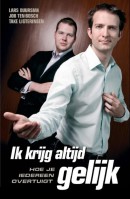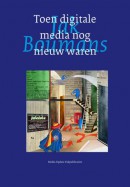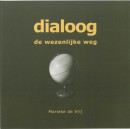Product informatie
- ISBN 9789051792744
- ISBN 10 9051792743
- Druk 1
- Bindwijze Paperback
- Taal Nederlands
- Uitgever Gopher B.V.
- Onderwerp Cultuur- en mentaliteitsgeschiedenis
- Beschikbaar sinds 5 Mei 2006
Samenvatting
The attentive reader will remark an anomaly in the subtitle of this volume. I have always proclaimed that the series is about dualism and about nothing else. This time it also speaks of non-dualism. This does not mean that I changed my basic concept. I needed the non-dualistic concepts of High Scholasticism as a template against which all ways of thought, whether of centuries prior to this period, or those which still were to follow, may be considered. It was in particular during the years from1250 to 1275, when Thomism was predominant, that a perfect equilibrium between God and the world, the Creator and the created, between God and man, between faith and reason, between theology and philosophy was reached. Ch. I, Part I is about the pre-Scholastic period.. Pseudo-Dionysius is described as ... the transmitter of ancient lore to the Middle Ages, and Boethius as the one who transmitted Aristotelianism to medieval scholarship. Some of the founding fathers of European civilization are mentioned: Pope Gregory I, St.Isidore of Sevilla, and Alcuin, Charlemagne's 'minister of education'. The first great medieval theologian was Johannes Scotus Erigena. He was the first to raise "the theological question of the claims of reason [i.e. of philosophy] in the formulation of Christian doctrine". Part II is about early Scholasticism. The discussion about the relationship of the universalia (general concepts) and the realia (the concrete thing) would be one of the great issues during the Middle Ages, with its corollary, the discussion about the relationship of the One and the Many. Often it was a question of either-or: either the universalia were so heavily stressed that little or no room was left for the realia, or the reverse was the case so that the universals lost almost all significance. Did universals, general concepts, have an existence of their own, an ontological status, or do they exist only in the mind? Concretely, is the idea of 'man' something that exists separately from the individual person? There were those who denied that ideas would have an ontological status; only concrete individuals - things, persons - are real. There were also the ultra-realists to whom only ideas, concepts, are real; concrete things exist only as manifestations of general concepts. Abelard, famous for his affair with Héloise, with whom he had a child, occupied a middle position. He accorded things a status of their own, but argued at the same time that universals possess an ontological status. In this way he helped to build the great non-dualistic platform of the Middle Ages. He was followed in this by John of Salisbury. Ch. II, Part I, is about medieval Muslim philosophy. Then as now, Islamic faith had its fundamentalists who adhered to the strictest literal interpretation of the Koran. Yet, there were others who felt the need to apply their reason to the tenets of Islamic faith. This is called kalam: theoretical, rational reasoning in general, also in the theological matters. The first to do this were the Mu'tazilites, who wantd to interpret the Koran in terms of reason. This does not mean that they were freethinkers or unorthodox. The archetypical representative of kalam philosophy was al-Kindi, the 'father of Arabic philosophy.' Yet there were also true freethinkers who sometimes came close to being atheistic. Al-Razi said that people had to choose between faith and reason; that people adhered to a religion was due to their mental laziness. Al-Rawandi fiercely attacked the most sacred truths of Islam; he did not spare the Prophet and not even Allah who he found to be a cruel and arbitrary being. al-Muqaffa' also objected to Islamic faith in several important respects; according to him it was pure mythology. The best-known Muslim philosopher was Avicenna. His influence was immeasurably great, because it was he who made the West acquainted with Aristotle's writings. He believed in God, without being very devout or dogmatic. He conceived of himself as a prophet whose task it was to show people the upward way that, along several stages, would lead to mystical union with God. Nevertheless, he was grounded in Greek philosophy, especially in Plotinus, rather than in the Koran. Naturally, a movement of protest began against this rationalism and intellectualism, based on Greek philosophy. It was led by al-Ghazali who vehemently attacked Aristotle. It is often thought that he put the lid on the development of philosophy in Islam, so that henceforward there was only obscurantism and irrationality. This is what is called the 'closing of the gate'. This is not wholly correct, because after al-Ghazali there was yet another important philosopher, Averroes. Yet on the whole it is true: for many centuries not one Muslim thinker participated in the intellectual debates of the West. Part II is about Jewish philosophy. As of old, also the Jewish mystics of the Middle Ages found it hard to reconcile the biblical notion of a God who is present and manifests himself in his creation, and that of the deus absconditus, the hidden God; the distinction between a known and knowable God and an unknown and unknowable deity is dualistic; Jewish mystics were not able to overcome it. A peculiar element in Jewish mysticism is Kabbalism. With this we are very far from biblical orthodoxy. It has no personal name for God; they call him En-Sof, the 'infinite'. Some even held that En-Sof and Jahve are no identical. On he whole Kabbalism does not acknowledge two gods, one good, one bad. Only the Sefar ha Bahir, the Book Bahir, does this. The main Kabbalistic work of the Middle Ages is Sefer ha-Zohar, the Book of Splendour, characterized as a theosophical work, In it God is the infinite and hidden one. Although Jewish philosophers did never stray so far from biblical orthodoxy as some Muslim thinkers strayed from the Koran, to many of them Greek philosophy seems more important than the Old Testament. This means that often reason takes precedence over faith. Neoplatonic influences are found in Israeli, and also in Gabirol. His thought stood far from authentic Judaism; Jews could not relate to it. Judah Halevi protested against these rationalistic (Neoplatonic and Aristotelian) tendencies. Judaism was forcefully defended by Ibn Daud. His object was to reconcile religion and philosophy (which was to him Aristotelianism). The last great Jewish philosopher of the Middle Ages, and also the best-known was Maimonides. The book that made him famous, also in the West, was the Guide for the Perplexed, written for his co-religionists who were confused by the struggle over the relationship of Revelation and reason, of theology and philosophy. He found them perfectly compatible. All the same, he is leaning so far towards reason that some see in him a patron saint of modern free thought. Ch. III contains the discussion of High Scholasticism, which may be characterized as an all-out attempt to reconcile faith and reason. Part I is devoted to Anselm of Canterbury and his ontology. His object was to show that there is no conflict between faith and reason. This would remain a central argument for Scholasticism. Pride of place is given to Anselm's ontological proof of God's existence. Is it valid or is it not? The present author argues that it is. Part II discusses the Schoolmen of the thirteenth century. The first was William of Auvergne. High Scholasticism opts for realism. The three great realist of this period are Robert Grosseteste, Albert the Great, and Thomas Aquinas. Yet an honourable place must be given to Saint Bonaventura. All their philosophies and theologies are non-dualistic. Let me restrict myself to Saint Thomas, the greatest of all medieval thinkers. To him Aristotle was the man behind the throne. Thomas was equally at home in philosophy and theology, but he did not confuse them: each exists in its own right. With regard to the endlessly debated question of the universalia and the realia he held a middle course; he rejected both ultra-realism (no status for concrete things) and nominalism (no universals). His whole thinking was based on the concept of the analogia entis, the analogy of being. This means that there is an analogy (not an identity) between God the Creator and his creation, especially between God and man. This concept excludes every form of dualism. Ch. IV is entirely devoted to Dante, mainly to his great work the Divina Commedia. This work may be seen as a summa of medieval thinking. However, Dante, although being an erudite man, was not a theologian or a philosopher, and his work is not a rhymed scholarly treatise. It exists in its own right as a great poetic work. It leads the reader through, successively, Inferno, Purgatorio, and Paradiso. The chapter contains a step by step analysis of this journey. Ch. V describes the deconstruction of the medieval non-dualistic platform. Between 1250 and 1275 there was a kind of honeymoon in European mental history. For a quarter of a century a perfect balance was reached in the field of philosophy and theology, through the efforts of some of the greatest minds that ever were. The two great problems, that of the relationship of faith and reason, and that of the universals and the particulars, had been convincingly solved, all this on the basis of acknowledging the analogy of being. This honeymoon did not last long. High Scholasticism is usually referred to as the via antiqua. This means that there is also a via moderna. This is the new philosophy and theology of the fourteenth and fifteenth centuries. It was inaugurated by William of Ockham. He had no need for analogical concepts, and certainly not for the analogy of being. He admitted that we are always using general concepts, but they have no status of their own. They are no more than names, nomina, hence the term 'nominalism'. The real existents are the concrete objects. But if we make use of a general concept, we do not know to which r
Meer boeken van uitgever Gopher B.V.
Meer boeken met de onderwerpen Cultuur- en mentaliteitsgeschiedenis
Veel gestelde vragenmeer antwoorden
Hoe werkt Resale.nl?
Je kunt op de website advertentie(s) plaatsen van de boeken die u wilt verkopen. Een potentiële koper neemt dan contact met je op om samen een prijs af te spreken en de transactie verder af te handelen. Houdt hierbij onze aanbevelingen voor een veilige transactie in gedachten en voorkomt dat je slachtoffer wordt van oplichting.
Hoe kom ik in contact met de verkoper?
Je kunt een reactie versturen door bij de betreffende advertentie van de verkoper op de knop ‘doe een bod’ te drukken. Je kunt nu een bod doen op de advertentie en een persoonlijk bericht toevoegen. Het verstuurde bod brengt je in contact met de verkoper via e-mail.
Wat zijn de kosten voor het verkopen van mijn studieboeken?
Je kunt geheel gratis gebruik maken van de diensten van Resale.nl. Resale.nl haalt zijn inkomsten uit advertenties.
Hoe kan ik een boek kopen?
Resale.nl werkt globaal op de volgende manier:
- Zoek via het zoekveld het studieboek dat je wilt kopen.
- Uit de zoekresultaten kies je het studieboek waar je geïnteresseerd in bent.
- Op de detailpagina van het studieboek kun je een overzicht vinden van de personen die het studieboek verkopen.
- Je kunt nu een bod plaatsen door op de button te klikken. Het bod wordt via e-mail aan de verkoper verzonden.
- De verkoper van het studieboek neemt contact met je op door een reactie te geven op het bod dat je hebt verzonden. Met de verkoper kun je gezamenlijk een prijs afspreken. Houdt hierbij onze aanbevelingen voor een veilige overdracht in gedachten en voorkom dat u slachtoffer wordt van oplichting.
Hoe weet ik wat ik koop?
Om te achterhalen of wat je koopt ook daadwerkelijk is wat er wordt geadverteerd is het verstandig om bij de verkoper langs te gaan en het aangebodene te bezichtigen. Doe je dit niet, dan loopt je een zeker risico. Onder het kopje ‘Hoe kan ik de kans op misbruik verkleinen’ kun je meer over dit onderwerp vinden.
Kopers over Resale.nl
bart van gijsel
"Ik ben erg tevreden over deze verkoper de familie thus. Goede snelle levering."
Patrice Michel
"De verkoper heeft er alles aan gedaan om het door mij bestelde product zo snel mogelijk naar mij toe te krijgen. Heeft me van iedere stap op de hoogte ..."
marjolein
"Besteeling snel bezorg, in goede staat net zoals beschrijving en goede communicatie met verkoper!"
marjolein
"Goed contact, snel en in goede orde ontvangen. Staat van het boek was zo goed als nieuw!"
hilda1
"goede medewerking en hulp dank u wel"
Tineke
"Het bestelde werd netjes en snel afgeleverd. De prijs was goed."
stacy
"Goed verpaktBoek ziet er mooi uit"
elisa
"Goede levering alleen jammer dat er niet bij was gezet dat er al in geschreven was"
Elly
"Verkoper reageerde snel op mijn emails en heeft ook het boek snel opgestuurd.Het boek was niet van nieuw te onderscheiden. Was waarschijnlijk niet gebruikt. ..."
Gerard+[2]
"Prettig contact gehad en goed zaken kunnen doen."
















